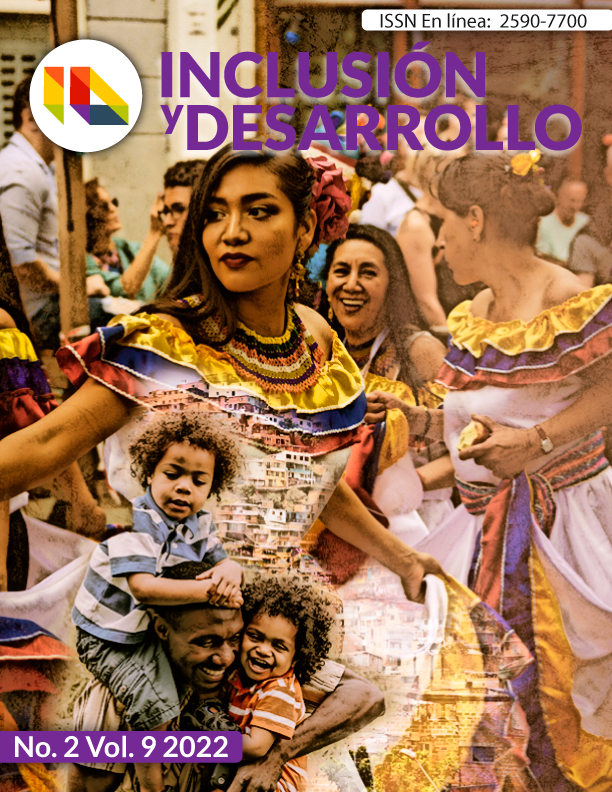Functional, Spatial-Motor Evaluation in training with para-Karate Athletes
Main Article Content
Abstract
Sport in people with disabilities has been analyzed in the last decade for its importance and outstanding relevance from
different angles. For this reason, Reina (2014) establishes that sport has become an instrument for socio-educational
inclusion, but not without first seeing the barriers it represents for people with disabilities. The purpose of this research
consisted of evaluating the functional, spatial and motor skills in sports training of athletes in para-karate for the
strengthening of performance in competition. It was based on a field research, and is located in a descriptive study, with a
non-experimental design, it was aimed at studying a problem present in 12 para-athletes of 04 sports classes (K10, K21,
K22 and K30) of the Province of Pichincha - Ecuador of the para-karate modality. The results obtained demonstrated a high
sports performance and motivation for the execution of movements and para-karate techniques that involve coordination
and concentration for the execution and evaluation of aspects such as short-term memory, long-term memory, processing
speed and perception. spatial, as well as assessing the knowledge of the parts of the body and gross motor coordination. In
conclusion, the team behavior of these athletes was observed where, despite the limitations, their willingness to learn and
put into practice techniques that for many are complex, however, because they are people who have overcome so many
social, cultural and even emotional barriers, they continue to advance without giving up, demonstrating with courage,
dedication and discipline the achievement of goals now in the sports area. It is recommended for future research to assess
the results obtained regarding spatial orientation and motor parameters obtained in the different tests or spatial and
motor functional evaluation tests, this in order to formulate a training methodology focused on the training of athletes
with visual disability, intellectual disability and physical disability, giving each of them an individual approach according to
their special conditions.
References
Ale de la Rosa, Y., Guillen Pereira, L., & Herrera Camacho, A. (2021). Desarrollo de competencias profesionales en personas con discapacidad para la praxis del Entrenamiento Deportivo: una visión desde el caso Andrés. Universidad Central del Ecuador.
Andrade, E., Arce, C., & Seaone, G. (2002). Adaptación al español del cuestionario «Perfil de los Estados de Ánimo» en una muestra de deportistas. Psicothema, 14(4), 708–713.
Aydin, M. (2014). Assesing knowledge levels of secondary school physical education and sports teachers about inclusive education. Educational Research and Reviews, 9(21), 1115-1124.
Betancur Agudelo, J. E. (2013). Prácticas incluyentes y excluyentes en la clase de Educación Física. Educación Física y Deporte, 32(2), 1433-1440.
Botias, C. J. (2015). La Educación Física Inclusiva: su función socializadora en el alumnado con discapacidad. Murcia: Universidad Internacional de La Rioja.
Carrasco, S. (2011). Un Enfoque Psicomotor, Programa de Educación Física para alumnos de. Chile: Inter – Gráfica Ltda.
Castillo Briceño, C. (2015). Posicionando la educación inclusiva: Una forma diferente de mirar el horizonte educativo. Educación, 123-152.
DePauw, K. P., & Gavron, S. J. (2005). Disability Sport. . In Disability Sport, 89–96.
DePauw, K., & Doll-Tepper, G. (1989). European perspectives on adapted physical activity. Adapted Physical Activity Quarterly, 6(2), 95-99.
Federación Mundial de Karate. (2021). Reglamento de Competicion de Kata. Madrid.
Ferrante, C. (2014). Cuerpo, discapacidad y estigma en el origen del campo del deporte adaptado de la Ciudad de Buenos Aires, 1950-1961. Rio de Janeiro - Brasil.
García Obrero, E., & González García, H. (2021). El baloncesto como medio de inclusión en el trastorno del espectro autista. Dialnet, 673-683.
García, D. M., & López, I. G. (2012). Adaptación al español del cuestionario «Perfil de los Estados de Ánimo» en una muestra de deportistas. Psicothema, 14(4), 708–713.
Gómez Valdés, A., Planes Rivera, D. D., & Gómez Ledesma, Y. (2019). Acciones metodológicas para contribuir al proceso de Educación Física Inclusiva: Una aproximación al tema. Revista de Educación, 17(1), 84-96.
Gómez, A., Planes, D., & Gómez, Y. (2019). Acciones metodológicas para contribuir al proceso de Educación Física Inclusiva: una aproximación al tema. Scielo.
Hernández Fernández, A., & De Barros Camargo, C. (2021). Inclusión, atención a la diversidad y neuroeducación en Educación Física. Dialnet, 555-561.
Hernández, R., Fernández, C., & Baptista, P. (2008). Metodología de la investgación. Mexico: Interamericana Editores .
Milićević, M., Pacić, S., & Krstić, S. (2013). Comunicación presentada en International Scientific Conference: Effects of Physical Activity Application to Anthropological Status with Children, Youth and Adults. Belgrado - Serbia.
Moreno, C. (2016). Deporte inclusivo en la escuela: Porpuesta de educación a LOMCE. Madrid: Universidad Politénica de Madrid.
Morgado , I. (2005). Psychology of learning and memory: basics and recent advances. Rev Neurol, 289-297.






